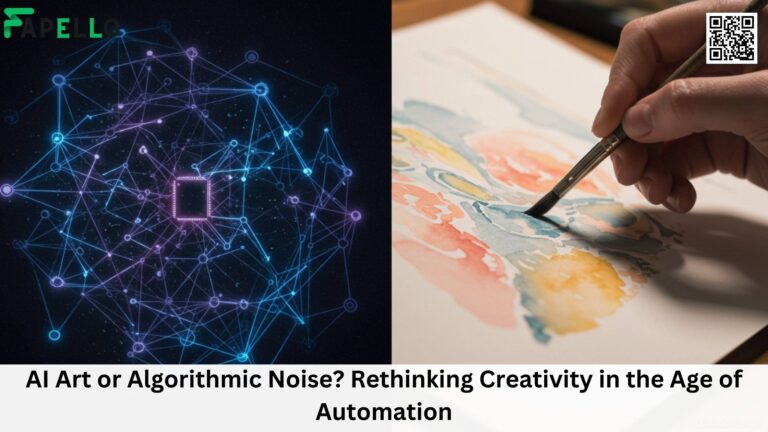In today’s digital world, video content plays a huge role in communication, entertainment, and business marketing. However, not everyone can easily access and understand videos due to language barriers, hearing impairments, or literacy challenges. This is where CapCut’s Desktop Video Editor and its Text-to-Speech (TTS) feature are making a big difference.
CapCut, a popular free video editing software, has introduced a powerful Text-to-Speech function that helps creators add voiceovers to their videos without needing a human narrator. This technology is a convenience and a game-changer for accessibility in media and business. Let’s explore how CapCut’s Text-to-Speech feature improves inclusivity and makes video content more engaging for everyone.
What is CapCut’s Text-to-Speech Feature?
CapCut’s Text-to-Speech AI feature allows users to convert written text into spoken words using AI-generated voices. This feature provides various voice options in different languages, tones, and styles, making it easy for users to create natural-sounding voiceovers for their videos.
Instead of recording their voice or hiring a professional narrator, content creators can type the text they want to be spoken, select a voice, and let CapCut generate the audio automatically. This tool is handy for those who may not have access to professional recording equipment or voice actors.
How to use CapCut’s text-to-speech?
Here’s a more detailed version with natural paragraphs for each step:
Step 1: Upload Your Video
To start using CapCut’s Text-to-Speech feature, first open CapCut and create a new project. You can either import your video or start with a blank project, depending on your needs. If you’re starting from scratch, use the Text tool to type in your script or dialogue. This will be the text that you want CapCut to turn into speech.
Step 2: Convert Text to Speech
Once you’ve added your text, select it, and then click on the “Text-to-Speech” option in the toolbar. CapCut offers a range of voice styles, from male and female voices to more dynamic tones like upbeat or deep voices. You can also adjust the speed, pitch, and emphasis to make the speech sound more natural or suit the mood of your video. After adjusting the settings, click “Generate” to convert the text into a voiceover.
Step 3: Edit & Export
Now that you’ve generated your voiceover, take some time to preview it and ensure that it fits well with your video. If you need any changes, you can adjust the text, voice style, or timing. You can also add background music, sound effects, or subtitles to enhance your video. Once everything is to your liking, click “Export” to save the final video, ready for sharing or publishing.
How is CapCut’s Text-to-Speech Improving Accessibility?
A. Helping People with Hearing Impairments
One of the biggest challenges for people with hearing impairments is accessing audio-based content. While captions and subtitles help, many users prefer having a clear voice alternative, especially in learning environments. CapCut’s TTS feature allows creators to generate audio in clear, easy-to-understand speech, making it simpler for users who rely on hearing aids or assistive listening devices.
B. Bridging Language Barriers
The ability to generate speech in multiple languages makes CapCut’s TTS feature useful for global audiences. Businesses and content creators can easily translate their text into different languages and use TTS to generate voiceovers, allowing them to reach a wider audience. This is especially important for companies looking to expand internationally without investing in costly translation and voiceover services.
C. Supporting People with Dyslexia and Literacy Challenges
Listening to spoken words can be much easier for individuals who struggle with reading than reading subtitles. CapCut’s TTS feature helps make educational content, news updates, and business presentations more accessible to those with dyslexia or other reading difficulties.
How Businesses Benefit from CapCut’s Text-to-Speech
CapCut’s TTS is not just an accessibility tool; it also benefits businesses in various ways.
A. Cost-Effective Voiceovers for Marketing
Creating professional voiceovers for advertisements, social media videos, and promotional content can be expensive. Hiring voice actors or using traditional recording studios requires both time and money. With CapCut’s TTS, businesses can generate high-quality voiceovers instantly, saving resources while maintaining professional-quality content.
B. Faster Content Creation
Speed is crucial in digital marketing and content creation. With CapCut AI Video Generator, businesses can quickly generate AI-powered videos without additional equipment or waiting for professional recordings. This allows them to release content faster and stay ahead of trends.
C. Enhancing Customer Support and Training Materials
Many businesses use video tutorials and training materials for employees and customers. TTS makes creating clear and engaging instructional videos easy without needing a dedicated narrator. This improves customer experience and ensures employees receive consistent training materials.
Making Educational Content More Accessible
The rise of online learning has increased the demand for accessible educational content. CapCut’s TTS feature can help educators and e-learning platforms create audio-enhanced lessons that cater to different learning styles.
For example, language learning apps can use TTS to provide pronunciation guides, while history lessons can come to life with AI-generated narrations. This makes learning more interactive and enjoyable for students worldwide.
The Future of Text-to-Speech in Media and Business
As AI technology advances, Text-to-Speech features will become even more sophisticated. Future improvements include more natural voice expressions, better pronunciation accuracy, and enhanced emotional tones to make AI voices sound even more human-like.
For businesses, this means more personalized and engaging content for customers. For media creators, it offers greater storytelling possibilities. And for people with accessibility needs, it opens new opportunities for easier communication and engagement with digital content.
Source: Fapello
Conclusion
CapCut’s Desktop Video Editor and its Text-to-Speech feature are changing how we create and consume video content. By making videos more accessible to people with hearing impairments, literacy challenges, and language barriers, CapCut is promoting inclusivity in media and business.
This tool offers businesses a cost-effective way to produce professional-quality voiceovers, speeding up content creation and reaching a broader audience. For educators and content creators, it enhances engagement and ensures information is accessible to everyone.
As AI technology evolves, we can expect even more improvements in Text-to-Speech features, making digital content more inclusive and interactive. Whether you’re a business owner, educator, or content creator, CapCut’s TTS is a tool worth exploring for better accessibility and engagement in your videos.






